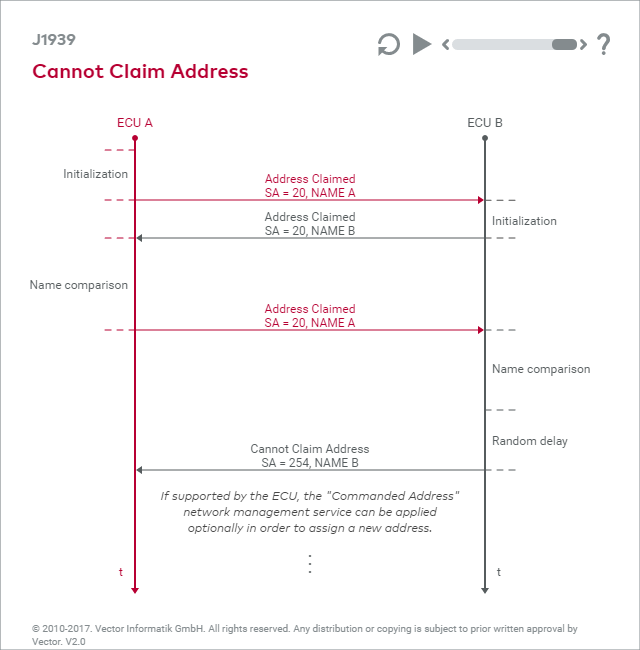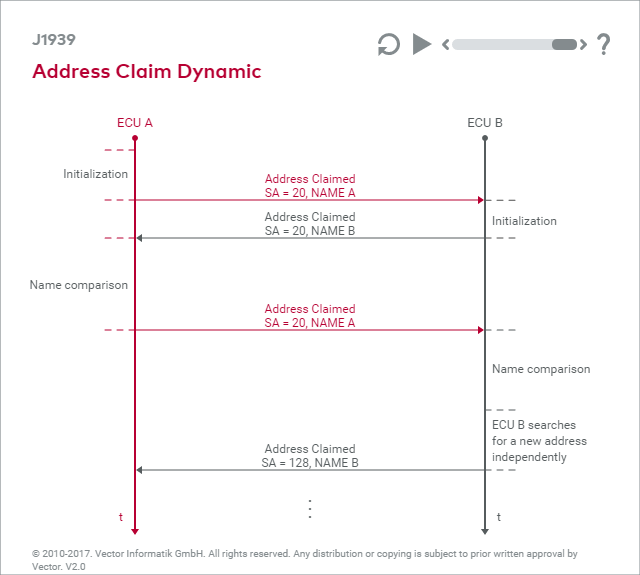- Overview
- 1. Introduction
- 2. General Description of the Protocol
- 3. Document Structure
-
4. Fundamentals
- 4.1. Names and Addresses
- Device Names
- Device Address
- 4.2. Parameter Group
- General
- Structure and Type of a Parameter Group
- Example of a Global Parameter Group
- Example of a Specific Parameter Group
- Parameter Groups reserved specially for the Protocol
- 4.3. Data Management
- Suspect Parameter Number (SPN)
- SLOT Definition
-
5. Network Management
- Network Access
- 5.1. Address Conflict
- Handling in a Dynamic Network
- 6. Transport Protocols (Multi-packet Messages)
- 7. Diagnostics
Solution and Configurations
Completion requirements
Priority
The NAME is used to resolve conflicts and for prioritization of addresses. Thus, if an address conflict is detected via the “Address Claim”, the devices involved must compare their NAMEs. This occurs bit by bit, starting from the MSB (Most Significant Bit). In doing so, the same rule applies as for the CAN arbitration: a zero is dominant over a one. The NAME with the smaller numeric value wins the conflict and the associated ECU can use this address. How the ECU that has the lower-priority NAME behaves in this case depends on its configuration. Four basic configurations of ECUs are provided for this:
- Self-configurable
After address loss, the device independently searches for a new address in the range from 128 to 247 and attempts to get this.
Animation „Address Claim Dynamic“ - Program-configurable
The device initially sends the ‘Address Claimed’ PGN with NULL address (254). This is interpreted in the network as “Cannot Claim Address”. A new device address can be assigned to an ECU by using the “Commanded Address” network management service. This can be carried out by an external tool or an “intelligent” device in the network.
Animation „Cannot Claim Address“ - Manually configurable
For this type of ECU, a new address can be set only with the help of a switch. A commonly used method of this configuration is an installation depending on ECU location. An address is coded here with the help of the processor I/O ports. A door ECU can then determine independently, for example, whether it is installed on the left or right and then choose the appropriate address. - Non-configurable
An ECU of this type can only receive a new address by reprogramming the device software.

Last modified: Thursday, 12 April 2018, 9:49 AM

